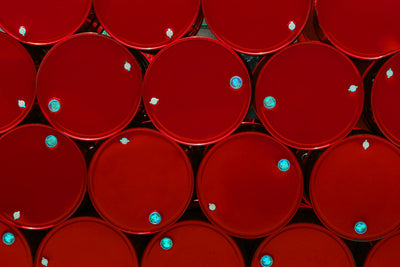1,4-Dioxane In Drinking Water: What You Need To Know
RSS
Analies Dyjak, M.A. | Head of Policy and Perspectives
**Updated 9/21/2021 to include recent studies
What Is 1,4-Dioxane?
1,4-dioxane is a synthetic industrial chemical, typically used as a stabilizer for chlorinated solvents. It was historically used in the production of 1,1,1-trichloroethane (TCA), which was phased out in 1985 after scientists determined it to be an ozone-depleting substance. Today, 1,4-dioxane is not typically added directly to consumer products but can be an unintentional byproduct in certain plastics. It’s introduced as a trace contaminant in certain ingredients, most commonly detergents, foaming agents, emulsifiers and solvents, including Polyethylene Glycol or PEG.
Is 1,4-Dioxane Regulated?
1,4-dioxane in drinking water is not federally regulated under the Safe Drinking Water Act, even though EPA has classified it as “likely to be carcinogenic to humans by all exposure routes.” There are health advisories in place but a Maximum Contaminant Level (MCL) does not exist. This means that unless a state has its own enforceable standard, utility providers are not required to remove it from drinking water. 1,4-dioxane is regulated by the Occupational Safety and Health Administration (OSHA) for indoor workplace air quality. 1,4-dioxane is on the fourth drinking water Contaminant Candidate List and is also part of the Third Unregulated Contaminant Monitoring Rule. In 2019, New York State became the first state to regulate 1,4-Dioxane by establishing Maximum Contaminant Limits (MCL) of 10 ppb in cosmetics, and 2 ppb in personal care and household cleaning products by 12/31/2022, which will be further reduced to 1 ppb by 12/31/2023.
How Does 1,4-Dioxane Enter Drinking Water?
1,4-dioxane has contaminated drinking water through both groundwater and surface water. Many instances of groundwater contamination are a result of 1,4-dioxane being used in various manufacturing processes. According to the Agency for Toxic Substances and Disease Registry, 1,4-dioxane can easily travel into groundwater because it is extremely soluble in water and does not stick to soil particles.
1,4-dioxane contamination on Long Island, New York was a result of routine spills or direct disposal of solvents to the ground from manufacturing operations between the 1950s to the 1990s.
1,4-dioxane was used in the manufacture of medical filters in Ann Arbor, Michigan. The methods of waste disposal used between 1966 to 1986 resulted in 1,4-dioxane being released into the environment, causing widespread groundwater contamination. 1,4-dioxane in drinking water continues to be a concern for local residents, even decades after the pollution was first discovered and remediation was to have been taking place.
1,4-Dioxane has also been released into surface water, both into rivers or public sewage systems. Sources of contamination include effluent from industrial facilities as well as wastewater treatment plants.
1,4-Dioxane Health Effects In Drinking Water
1,4-dioxane can harm the eyes, skin, lungs, liver, and kidneys. As previously stated, 1,4-Dioxane is classified by the US EPA as a likely human carcinogen. Like other contaminants, the dose and duration of exposure affect the likelihood and severity of adverse 1,4-dioxane health effects.
Why is 1,4-Dioxane So Hard To Remove From Drinking Water?
1,4-Dioxane is completely soluble in water. It dissolves completely, even at high concentrations. It also does not readily evaporate. Traditional treatment methods are ineffective at removing 1,4-Dioxane from drinking water, so a few larger municipalities have begun to incorporate specialized methods for 1,4-Dioxane removal in their processes. These can be prohibitively expensive for smaller municipal water suppliers, so there is not likely to be a widespread solution for 1,4-Dioxane removal implemented any time soon.
What Can I Do if I Have 1,4-Dioxane in My Water?
There are no federal testing standards for 1,4-Dioxane, so we are unable to provide removal data. Hydroviv’s filters have however been tested and certified by NSF to remove VOC’s with similar chemical properties to 1,4-Dioxane. Most submicron pore size carbon block filters are able to address 1,4-dioxane, with the exception of granular activated carbon. A slower flow rate will also assist the carbon block filter by ensuring enough contact time with the 1,4-Dioxane and the filtration media. For example, Hydroviv drinking water filters incorporate carbon into our submicron block and at our 1 gallon/minute flow rate.
Other Articles We Think You Might Enjoy:Does My State Regulate PFAS Chemicals in Drinking Water?
Fracking and Drinking Water
Does New Infrastructure Plan Address “Forever Chemicals” In Drinking Water?




